Feature: Reviews
Documenta 12
- Kassel, Germany
- June 16 through September 29, 2007
Editors’ note: This summer is the once-in-a-decade trifecta of big international art shows in Europe: Venice Biennale, Documenta, and Skulptur Projekte Münster. Berin Golonu has been sending Stretcher regular bulletins from the circuit – check the International blog for other reports. Here we feature her observations on the controversial Documenta.
My visit to Documenta in Kassel proved so disappointing that I wasn’t even going to write about the exhibition. However, after mulling the experience over for two weeks, I’ve decided to write about exactly why it was disappointing. The exhibition was huge, and sprawled over about 5 different venues, with hundreds of works to take in. Whereas the Venice Biennale offered a larger total number of works and projects on view, not all of the projects and pavilions in Venice were organized by the same people or adhered to the same curatorial vision, so there was a huge diversity of curatorial approaches. But at Documenta, visitors were obliged to try and follow the curatorial vision of two people, the husband and wife team Roger Buergel and Ruth Noack. Unfortunately, I didn’t find their vision or their outlook very compelling. Documenta seemed like a badly organized show that was trying to reinvent the art historical canon by dredging up overlooked artists and works. Alternate and parallel histories are fine to research and put forth, but if you don’t equip the audience with the right educational tools to try and comprehend these more unorthodox parallel histories or visions, then you are leaving your public behind.
First of all, there were no didactic materials on the walls or in handouts to correspond with what was on display. Viewers were left to fend for themselves in order to contemplate and draw meanings out of the work. So there were huge question marks about why the curators chose these particular works on view, why they chose to work with certain artists, and why they placed these artworks in the particular order that they did. The only way to even come close to answering these questions was to spend 20 Euro on an exhibition catalog that in itself was badly ordered (the artists were listed chronologically instead of alphabetically, as if the book were an art historical survey text), to carry this catalog around with you, and to try and locate the artwork you were looking for within its pages in order to read the artists motivations behind the work. But often times, even this didn’t help, because much of the writing in the catalog was cryptic, badly translated artspeak that was difficult to get through.
The irony about Documenta and how esoteric the exhibition seemed even to visitors who are well versed in contemporary art, was that the curators boasted about how “education” was one of the primary leitmotifs of the exhibition. Given such a promise, I decided to attend one of the lunch-time talks featuring one of the heads of the education program. She talked about how arts professionals were invited to Documenta from different parts of the world in order to serve as docents for the show. But she proceeded to explain that it was very expensive to book tours with these docents, and that this lunch-time lecture served as a rare opportunity to talk with these docents for free. She cut her talk short and suggested that we take advantage of this opportunity, grab a docent, take them to a work of art that made us scratch our heads, and to start a dialog about it. This seemed like an unnecessarily complex proposition. Wouldn’t it be easier to just offer the public some wall labels or artists statements posted near the projects? Or better yet, why not train the stern guards to answer questions about the work and to offer information to visitors, rather than asking the public to pay a fee to book a tour with a docent. It’s like asking people to pay a certain admission price to see the work, and then asking them to pay extra to actually understand the work.
Moreover, many of the artists these curators chose to work with were either unknowns or had received little recognition in to the Western art world. The upside of this, of course, was that there was a lot of new content to discover, and artists from developing countries in Asia, Africa and Latin America stood out as having produced some of the most interesting and most compelling work on view. The downside, however, was that their work wasnít explained properly. If you’re going to introduce artists whose work audiences have not encountered before, then you need to go out of your way to try and address why this work has been chosen for display. As a result, the projects that were more straightforward and self evident made the strongest impact, the projects that adhered to more involved conceptual approaches fell by the wayside. Confronted with so much work to take in, viewers just couldn’t take the time to flip through the catalog in order to comprehend projects that didn’t make an immediate impact and speak directly to the viewer.
Among the projects that spoke most clearly and directly were illustrated silk scrolls by the Beijing based artist Lu Hao. Lu had illustrated dozens of scrolls in the traditional style of Chinese realist painting he had been trained in, but rather than using traditional subject matter suitable for scroll painting (beautiful, lush landscapes, historic architecture, or quaint genre scenes) Lu documented all of the new high-rises and skyscrapers going up on Chang’an Avenue in Beijing, thereby commenting on how the city is erasing its past and transforming itself into a modern urban capital in time for the 2008 Olympic Games. Rather than being straight up documentation about change and metamorphosis however, I found Lu’s work to be much for poetic and hopeful. To me it suggested that no matter how strident the march toward economic progress, that we can import a sense of tradition into the future, whether this sense of the past is embodied in an artist’s painting style or whether it’s encapsulated in the outlook of the individuals who will be occupying these sleek new structures. Maybe new alternatives to Western concepts of modernity we have taken for granted are possible, and maybe they will come to us from the East.
Other projects I appreciated were elaborate African masks and effigies made from plastic canisters made by the Benin-based artist Romuald Hazoume; a seven channel video projection by Amar Kanwar about rape victims speaking out against the crimes committed against them (crimes that are unrecognized by the authorities of the various countries on the Indian subcontinent where these women live); and a video with a thumping dance soundtrack by the Brazilian collaborative Dias & Riedweg, which compares the nightlife of young residents of Rio de Janeiro’s favelas, with an illustrated account of a 16th century German explorer’s travels and encounters with the “savage natives” of the New World. I do have to commend the curators for placing Dias & Riedweg’s video smack dab in the middle of a museum that showcases noteworthy Northern Renaissance and Dutch masterpieces by artists such as Durer, Cranach, Rogier Van der Weyden, et all. It was hilarious to quietly contemplate a pristine Dutch still life painting one moment, then turn a corner and be bombarded with Dias & Riedweg’s infectious soundtrack, with images of these kids bumpin and grindin on a Rio rooftop. A good way to mix things up. I believe that this is what the curators were aiming to do with the rest of Documenta–to mix things up–but the Dias & Riedweg video was one of the few cases in which their efforts proved successful.
(3) COMMENTS
Documenta was a bore, and none of the artists, curators or arts professionals I knew could say anything constructive about it. To talk about the concept of “bare life” then go on to invite a Spanish Michelin chef as part of the show, and send 2 guests to Spain every day for 100 days (travel & board included)for a food tasting is a laugh. Same goes for Ai Wei Wei’s work of turning ethnocentricity into side-show alley.
Although I am familiar with the works of John McCracken and Juan Davila, there was little substantiation / rationale as to their significance within Ruth’s curatorial thesis (it’s like we are bored with Beuys and Warhol, let’s try somebody else). I’m sorry to say it’s bad, and sad.
While I agree that Documenta was a sprawling disorganized affair, the author fails to note that ipods with detailed descriptions of works and the curatorial vision of each venue were available for just a three euros. This audio guide, featuring artists and curators and available in several languages, greatly enhanced my experience.

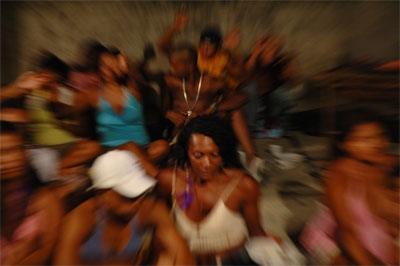
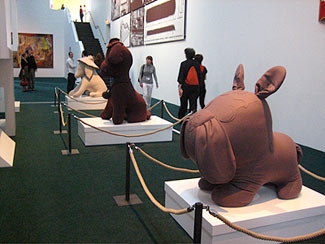
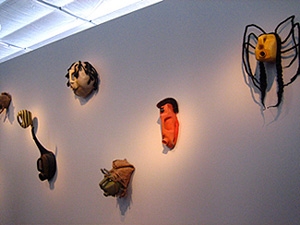
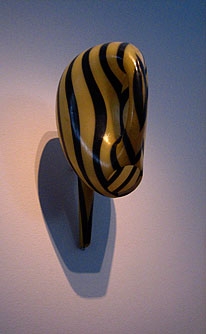
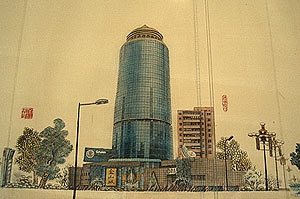
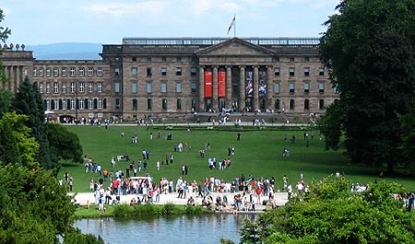
viewing the work without wall labels, lets it speak for isself not through an interpertation, that in itself could be a bit worrysome for someone in your position
anonymous • July 16, 2007